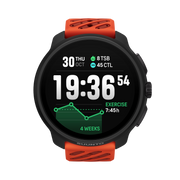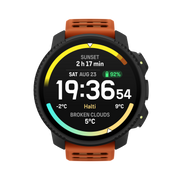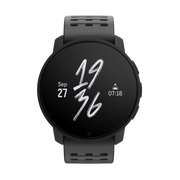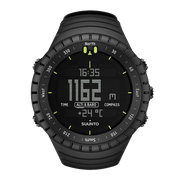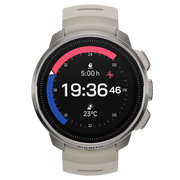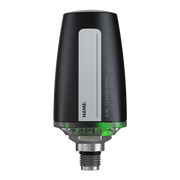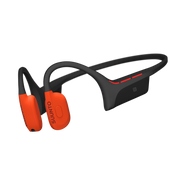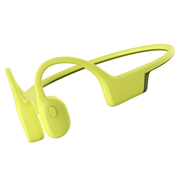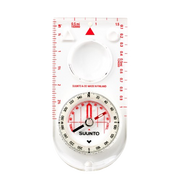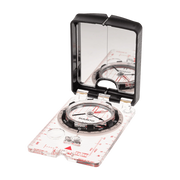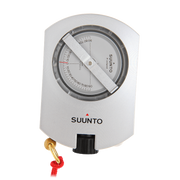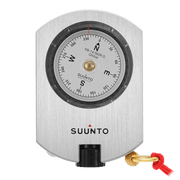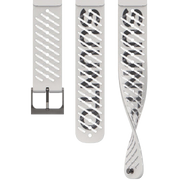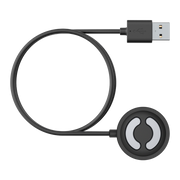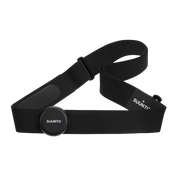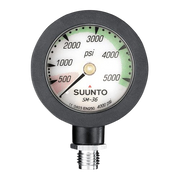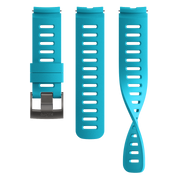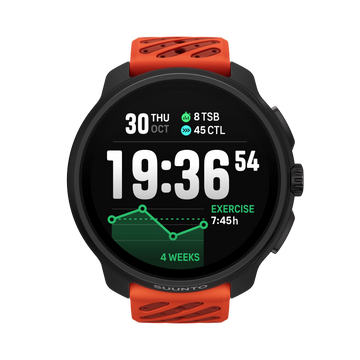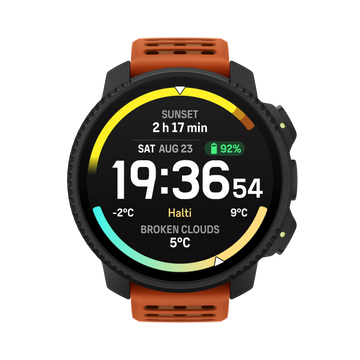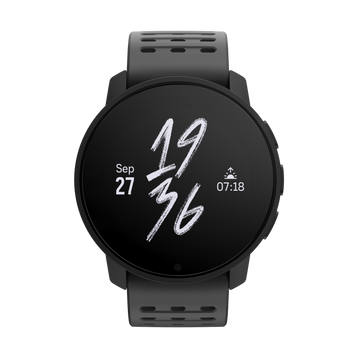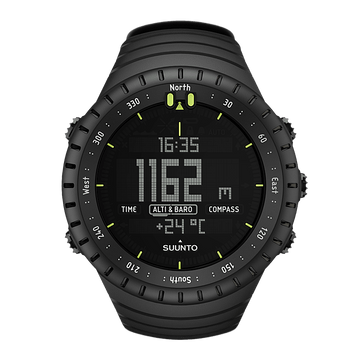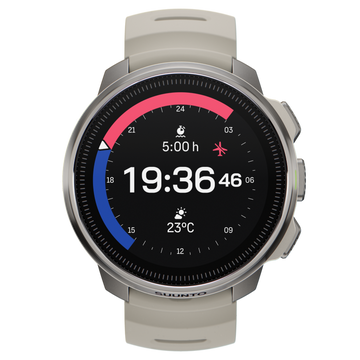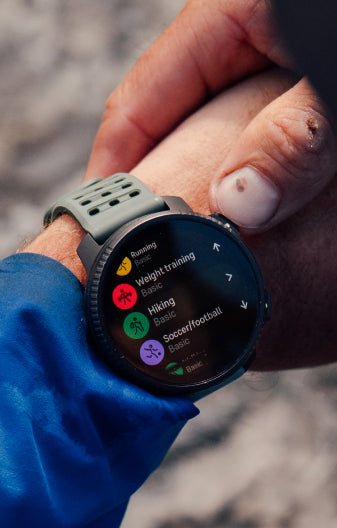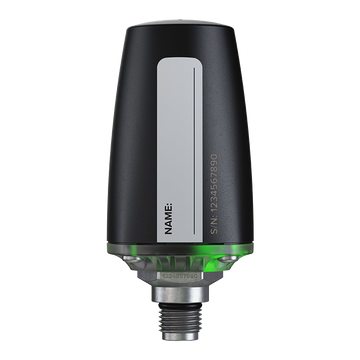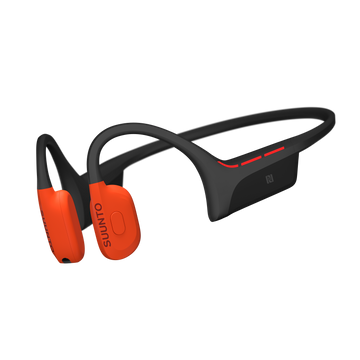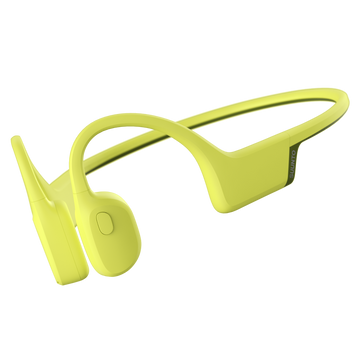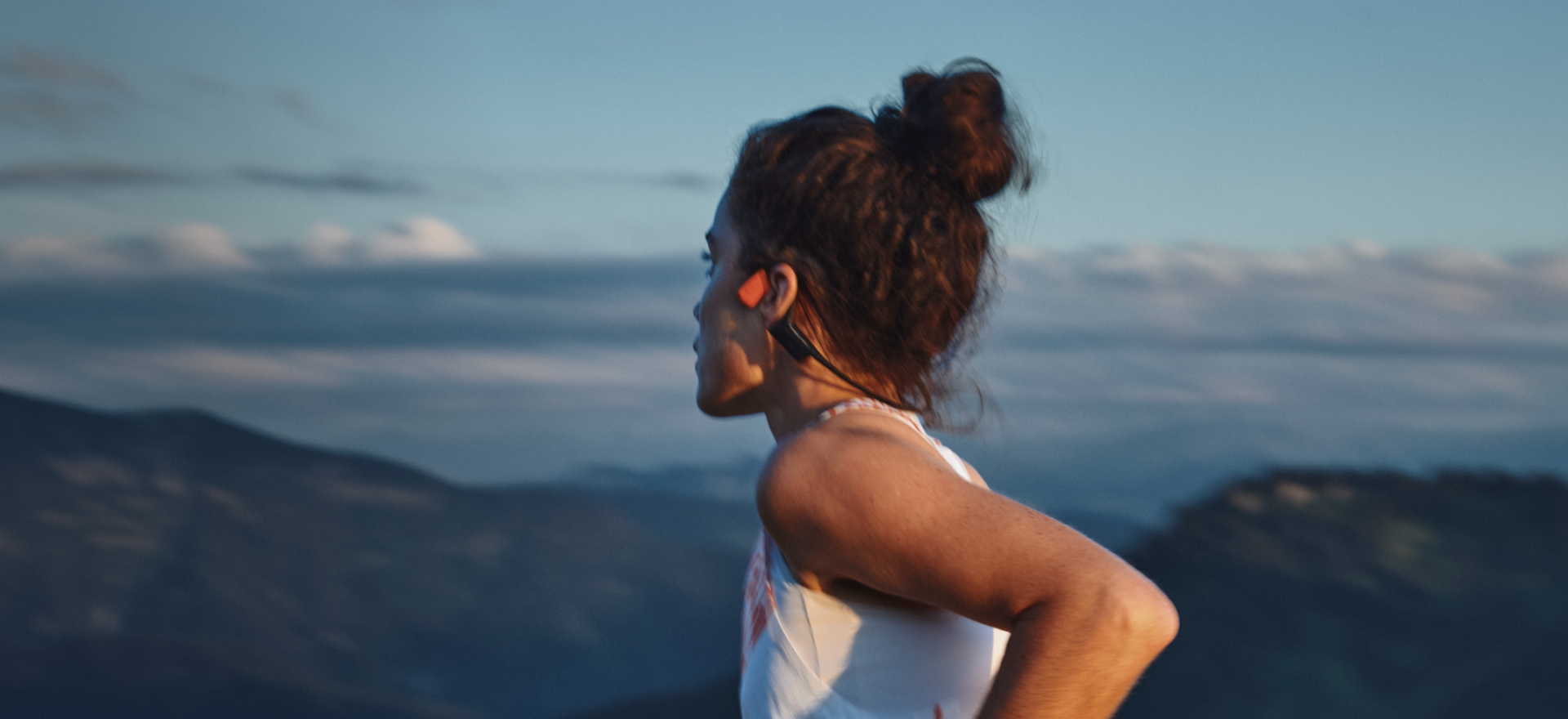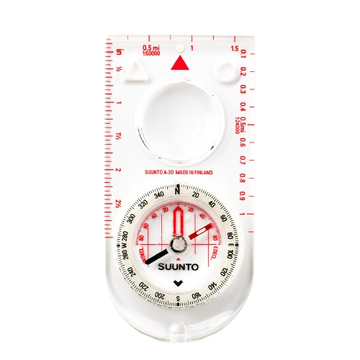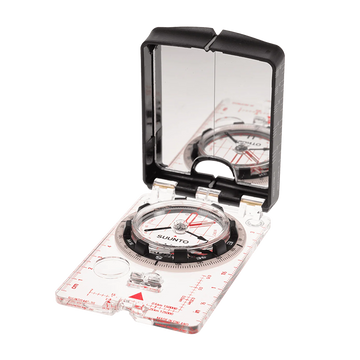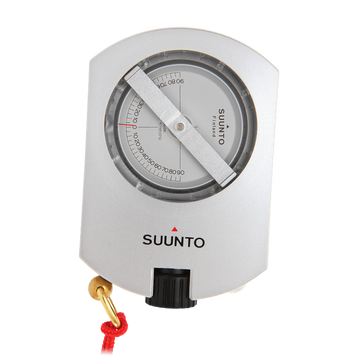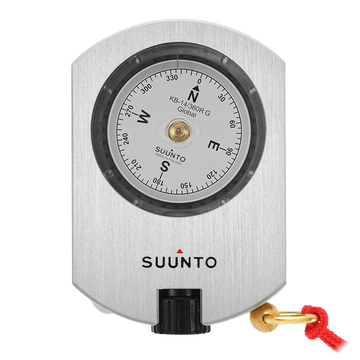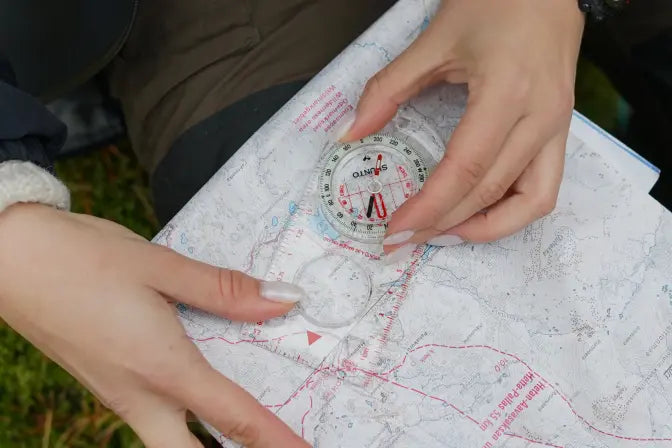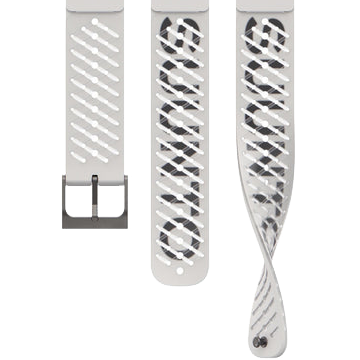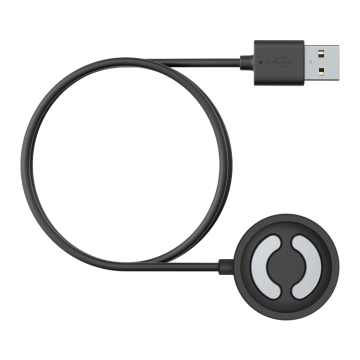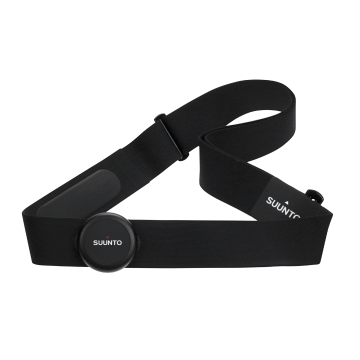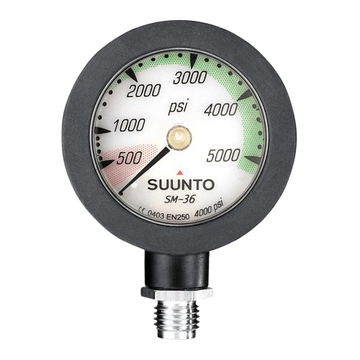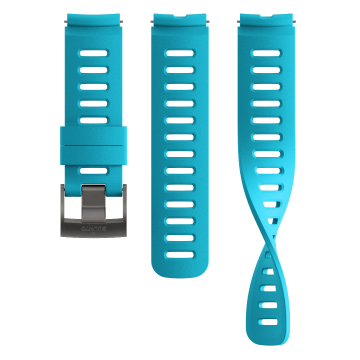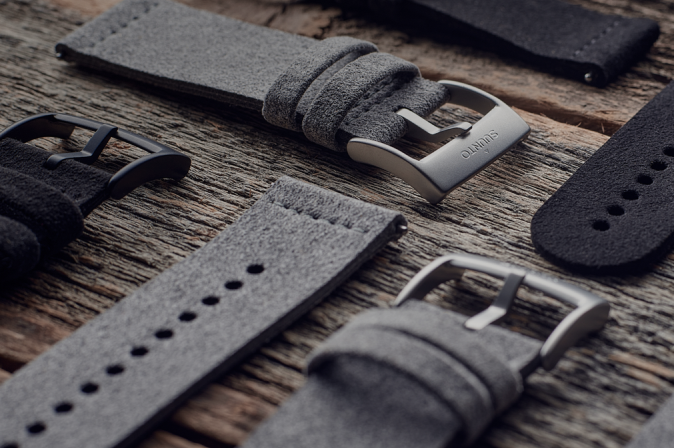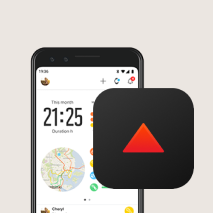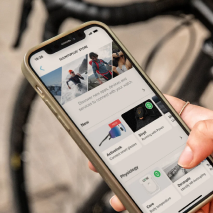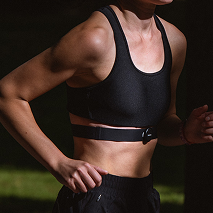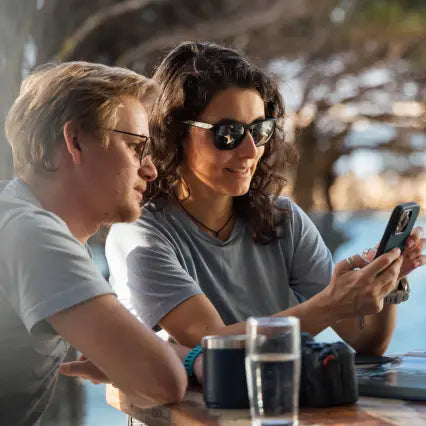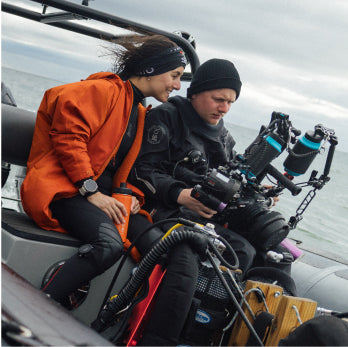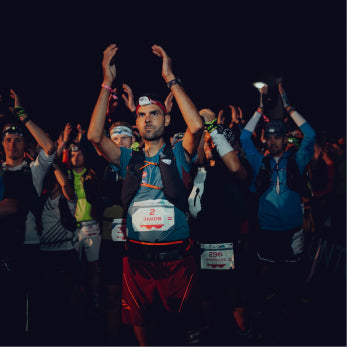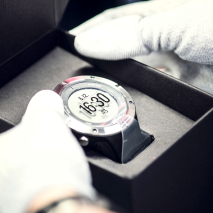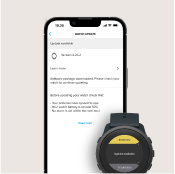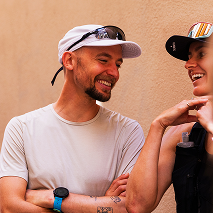

Suunto-blogg
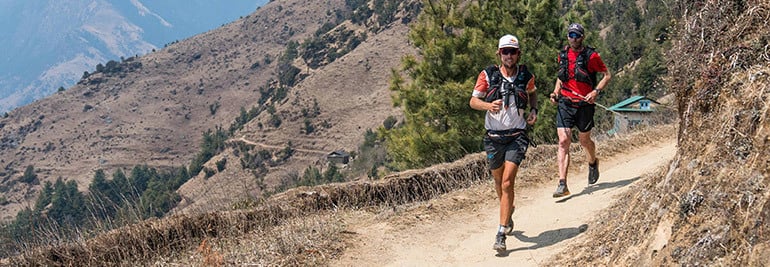
5 life lessons learned from running the Great Himalayan Trail
© Dean Leslie / Red Bull Content Pool
The Ultra Trail Mont Blanc (UTMB), considered the world’s premiere ultra race, has haunted 36-year-old South African athlete Ryan Sandes since 2015.
The last three times he attempted it, “trail karma” got the better of him: first glandular fever knocked him out, the second time he dropped out after 40 km due to a stomach infection, and in 2017 he finished in the top 20, but only after soldiering through the race with dead legs.
Now he’s in Europe training in the Alps to give it another shot in late August, and this time something has changed – his attitude. For the build up to UTMB, Sandes ran the Stubai Ultra – 63 km, 5075 m ascent. Unfortunately, he had pull out of the race early. “That didn’t go according to plan,” he said on Instagram. “It seems my climbing legs are still in the Himalayas. I was pretty disappointed to cut my race short.”
© Dean Leslie / Red Bull Content Pool
In spite of this, and his previous bad luck on the UTMB, Sandes is feeling unusually relaxed. He puts it down to some of the hard lessons he learned while smashing the Fastest Known Time (FKT) on the Great Himalayan Trail with Ryno Griesel in March this year.
“In the past I put too much pressure on myself at the UTMB with time and results,” Sandes says. “Now I just want to enjoy the process.
“I want to do the best I can, but there’s only so much you can do. You can’t get too freaked out. I don’t want to look back 10 years from now, and say, ‘yeah, I ran UTMB, but I hated most of it because I was too fixated on the result.
“I want to enjoy the overall experience. The end goal is just a byproduct.”
Here are Sandes’s life five lessons from the Great Himalayan Trail:
© Dean Leslie / Red Bull Content Pool
1. Break things down into bite size chunks
“For ultras, it might be from one aid station to the next,” Sandes says. “For normal life projects, like building a house, find a similar way to try to wrap your head around it. Sometimes I think too far ahead, and then I get stressed. On the Great Himalayan Trail I was forced to take it day by day – it was too big to do otherwise. It was cool learning to be really present and in the moment.”
2. Be generous
“The Nepalese people are incredible, how welcoming and supportive they are. It taught me one small thing you do can make a big difference in a person’s life. It’s all about being thoughtful. Nepalese in the mountains live a basic life, but they are super family orientated and friendly. It was quite a big reminder for me, especially now I have baby boy. In the west, everything is so quick and busy, that we sometimes forget to prioritise family. It reminds me to keep things simple.”
3. Focus on the small things in life
“In modern society we have massive goals, it’s shoot for the moon, which is important, but it’s also about being content with the smaller things in life. I get so hell bent on a race, I neglect family and the small things in life. We can become so driven sometimes that life can feel empty. It’s about balance, and appreciating small pleasures.”
4. Don’t overthink it
“I learned I’m a little bit of a control freak. It taught me there are so many things I can’t control. With life in general, it’s the person who can think on his feet who does the best. You need to be responsive to what life throws at you. In the Himalayas, we had quite a detailed plan in place, but everyday everything went out the window. It was pretty cool. Don’t overthink and freak out – you won’t enjoy yourself.”
5. Focus on the positive
“In the Himalayas, I had a two day period when I was really missing home. Interestingly, that was the toughest time for me physically. The physical follows the mental. To counteract this I told myself that it was a one off opportunity, it was my decision to be there, and lots of people dreamed of doing what I was doing. I also focused on the scenery and interacting with the locals. That definitely improved things.”
Lead image credit: © Dean Leslie / Red Bull Content Pool

Testing human physiology at the Norseman Xtreme Triathlon
© Kyle Meyr/nxtri.com
Ask Jonny Hisdal about the 226 km Isklar Norseman Xtreme Triathlon and you’ll get the honest truth. He should know afterall – not only has he completed the race course 12 times, as a physiologist he’s also researching what it does to the human body.
“Most of your biomarkers (chemicals, molecules, and hormones present in the blood indicating different forms of illness) are sky high when you reach the finish line,” he says. “If a doctor tested your blood immediately afterwards it would look like you are really sick, or having heart and kidney failure.”
© Kyle Meyr/nxtri.com
The good news is this alarming biomarker profile only lasts a short time. A day after the race the biomarkers are already on the way back down. Whereas, if you were really sick, the biomarkers would remain at the same level.
Hisdal is currently preparing to sample the blood of more than 40 finishers immediately after the end of the race, which starts on August 4. The goal is to understand what the normal blood levels are after such an extreme race. He’s also participated in a study looking at the possibilities and limitations of cold water swimming – the race includes a 3.8 km swim in a fjord with water temperature ranging between 13 and 15.5 °C.
To reach the finish line of the Norseman demands more than endurance fitness. “Yes, it requires really good base fitness, and a high level of endurance,” Hisdal says, “but also a lot of mental strength to compete for so many hours. The average athlete needs about fourteen fifteen hours.”
© Kyle Meyr/nxtri.com
Hisdal is also on the safety team for the race, and recently completed the course along with the rest of the crew, making it his 12th time. He first competed in the race as an athlete in 2005, and did so the following five years. Since then, he has been on the race organising team.
“The swimming is the easiest part, something that everyone should be able to do,” he says. “Average athletes are in the water for one and a half hours – that’s a long time if you are not used to it.”
“After that you jump on the bike and cycle for 180 km, including 3000 m elevation gain. If you are not used to cycling uphill it's impossible to do it. Then you are running 25 km on the flat, and the remaining 20 km uphill for 2000 m of ascent. It's brutal.”
© Kyle Meyr/nxtri.com
Some people, he says, quit before the race has even started. Others pull out 1000 m into the swim, and some on the bike during the climb. But the majority make the finish line, after giving their blood, sweat and tears to the terrain. “The biggest problem is people train too much so they get injured,” he says. “Almost everyone overtrains.”
Click here to see Suunto's range of triathlon watches!
The race has played a central role in popularising triathlon in Norway. Before it began in 2003, triathletes were hard to find in the country, whereas since the inaugural race triathlon clubs have been growing in membership. Only about 20 athletes signed up for the first race in 2003. Now, 4000 people from all over the world apply, vying for only 280 start positions.
“The reason why I do it is because it's an incredible experience, and it keeps me motivated to train and stay in shape,” Hisdal says. “It's not really like a normal competition; it's more like adventure or travelling. It's travelling through breathtaking geography, and also mentally; you travel through really deep lows and up to some really big highs.”
© Kyle Meyr/nxtri.com
Here are Hisdal’s five tips for the Isklar Norseman Xtreme Triathlon:
1. Train uphill
“It's essential to train uphill, both bike and running, because the race includes 5000 m of it.”
2. Get used to cold water
“It’s a necessity to train your swimming in cold water. It should not be the first time when you start the race because it will give you problems.”
3. Train longer sessions
“It’s important to have some long training sessions of at least six or seven hours so you know what you will experience during the race.”
4. Know your fuel
“You need to be able to eat and drink for the race length. What you should eat, when and how much, is something you need to practice well in advance. It's very individual. You need to learn what your body can tolerate.”
5. Race smart with a sports watch
“Learn to control your intensity with a sports watch like the new Suunto 9. The most important thing is not to start too hard. If you are too high in intensity in the first few hours you will suffer for the rest of the race.
“I have used sport watches and a heart rate monitor to make sure I'm not too high in intensity. I have a max heart rate I can tolerate, and if I reach that I slow down a little. It's very easy to be too eager in the beginning, when people are passing you. You are blinded by adrenaline at the start and cannot trust your feelings. You will feel very strong, but suddenly the hammer comes down and you're finished. Sport watches help manage this – just make sure your one has enough battery life.”
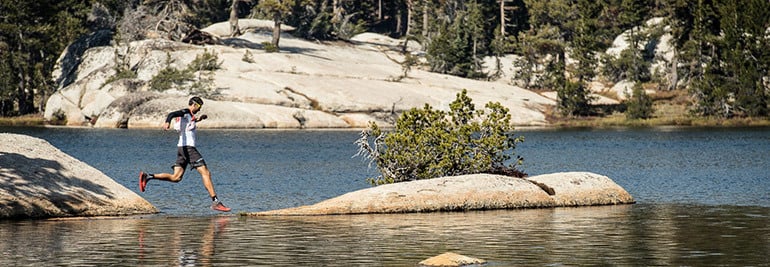
How a UTMB winner lives, trains and runs
Francois D’Haene is simply put, one of the best distance runners around. He’s competed in almost every major ultra on the planet, and took home first place in plenty of them – including three wins and a course record on the UTMB, a FKT on the GR20, and lately, a FKT on the ultra-gnarly John Muir Trail in the western United States. His latest run was an incredible achievement – and the story is very well told in the mini-doc below. Have a look – then read on to get Francois D’Haene’s tips for really, really long runs.
Do it for the adventure
For me ultra trail is an adventure and an experience. I want to discover myself, some new mountains, a new place and a new landscape. The competition between the runners is important for me and I play a lot with that during the race but it 's not my priority when choosing a race. When I choose an ultra trail I choose it because of the challenge that it is for me. It must be something really challenging to excite me and motivate me during many months and many training days.
For me this is the main difference between ultra trail and a classic trail race around 50-60k. On the ultra trail if you focus on the competition, and not on yourself and the adventure, it will be difficult to finish the race. On a 60k race I think that the motivation can be more based on the competitive aspect and less on the challenge of the race.
Listen to your body
Try to learn how your body works. Learn what it’s telling you. What are the signs that you are tired, hungry? Know them.
Keep your feet healthy and happy
I have my preferred shoes and I'm really confident in them – I feel really comfortable and protected inside. Then I have some socks. I always use them many times before the race day so I know exactly how they work. And of course, anti-chafing crème!
Eat the same thing, all the time
In training I try to use exactly the same food as in the race. You have to experience it and to prepare your body to use it. For me, that’s Nutrisens energy drink – about 800 ml an hour. And then each hour I eat a small energy bar. It's not a lot of variety, but it works for me and I have to be confident in that before a long race so I'm happy with that. During the race in the aid station, I’ll sometimes drink a hot bouillon or soup.
Always have a goal… or three or four
For me it's important. It cuts down pressure at the start line. You can always say to yourself: “I will try to do my best, but no matter what happens, I have some amazing projects later. So anything is possible today, and I'm happy with all the possibilities.” If you have only one goal... you put a lot of pressure on achieving that one goal.
Go slowly
If you’re new to trail or new to ultra distances, take your time. It's two different worlds. Your body needs to adapt itself. It must take some time. You have to understand how it could possible for your body.
Make it a team sport
When you, as a racer, are lucky enough to have an entertaining assistance crew around you, you really feel like you're running for a team.
And preparing for an ultra takes a long time – a really long time. You have to program it in your social life and you have to find your personal balance with training, your job, your family, your friends. If you plan it well, people around you can – and will – help a lot. So when you run your adventure, you will think about all those moments, all those people behind and around you, and you will have the sensation that you've run it all together.
Know your numbers
I have my personal screen that always has five pieces of data: time/altitude/ascent/distance/duration. During a race, I put the GPX in the map to make sure I can find the way when I’m not feeling confident.
Save your battery
On the John Muir Trail, I put the watch settings on ultra mode: less GPS precision, no automatic lap, no heart rate. I look at the watch every 15 minutes or so to just check the time and see how I’m feeling.
Recover later, enjoy the moment first
Recovery depends on your personal habits. After a race for me it's more important to have a moment with family, friends, and enjoy a party. So I don't take time for massage, relaxing and different things like that...
If you have small children you understand that it's important to take care of them and give some free time to your partner. Because it was hard time for them too during your race!!
Again, go slow
Take the time to plan your race, and be happy with that. With the right balance, everything will be easier. You will train and race with pleasure, good motivation and good health.
All images © Damien Rosso / DROZ Photo
Want to get a little better insight into Francois’s life of running, making wine, and more running? Follow him on Instagram.
Suunto 3 Fitness Tracks Sleep Quality - What Can I Do to Improve It?
Thanks to your Suunto 3 you can see when things are heading in the right direction, know when it is time to stay the course, and when it’s time to make some changes. You can also follow along to learn which strategies and solutions are the most effective for you.
Here are 5 tips to improve your sleep quality
Avoid strenuous physical activity late in the evening.
Regular physical activity is an important part of a healthy lifestyle, but your body doesn’t stop working when you do. Your body can remain in an elevated state long after you finish a workout. As a result, your night time recovery levels may be delayed and diminished.
Establish a regular routine before bed.
We are all creatures of habit, and for the most part we have good instincts for what constitutes a good evening routine. A good stable routine signals your body that it’s time to start winding things down and allows your body to get head start on the work of recovery.
Regulate alcohol consumption.
A glass of wine in the evening is a popular way to relax in the evening, or a few drinks may help unwind after a stressful day. More than a few drinks, however, will almost certainly delay the onset of recovery at night and will result in poor recovery.
Improve your cardiorespiratory fitness (VO2max) with regular physical activity.
As if there weren’t enough reasons to improve your fitness level, here’s one more. The fitter you are the less your body is impacted by stress. You also become more resilient, so that when you do experience stress your body recovers more efficiently. This is true both day and night.
Sleep more.
It’s almost cruel, but sometimes the cause of bad sleep is… wait for it… bad sleep. Chronically poor sleep diminishes your body’s ability to repair itself. It also impairs your ability to interpret situations. This includes the ability to assess your own performance levels, losing touch with yourself and the impact of bad sleep on your effectiveness.
As you think about stress, recovery, and sleep in relation to your own daily routines and lifestyle decisions, it’s worth keeping in mind that stress increases your body’s need for good quality sleep. This is important because busy, hectic schedules that often produce a lot of stress also tend to result in the devaluation of sleep and recovery in favor of doing something more. In the long run, however, the health and productivity benefits of a balanced approach to stress and recovery are well worth it.
Blog post by Herman Bonner / Firstbeat
LEARN HOW TO USE SLEEP TRACKING ON SUUNTO 3 FITNESS

Reaching the start line of her dreams
What's been happening?
I have been in Auburn, California the last four weeks preparing for the 100-mile Western States Endurance Run (WS). I came early to see what the trail holds, and to get used to temperature and altitude. I’ve adjusted well. I really eased into, and then moved to run in the hottest part of the day. It’s about 35 degrees celcius, and hotter still in the canyons. I’ve been lucky that over the last few years I’ve chased the sun, and haven’t had a winter. I’m feeling good!
What’s been new for you there?
The WS trail is super unique because of its downhill nature. I’ve never run a trail with so much grinding downhill. It sounds good, but after a while you’re searching for a hill. The quads feel it!
Western States is quite special for you, right?
Absolutely, because I’ve wanted to run it forever since I was 15. It was the first race I ever heard of, and I’ve been trying to get to the start line for three years. My aim for the race is to give my best; it’s an honor just having a bib. To complete my first 100 miles is a big thing – it’s a really long way. The people I get to stand on a start line with are amazing. I was their fangirl when I was a teenager. Now they are giving me advice, which says a lot about the camaraderie in our sport.
What's in your diary this summer and what's the main focus?
WS is the main focus. I’ve left the back half of the year open. WS is my first 100-mile event, and I’m not sure how I will feel physically, mentally, emotionally after it. I’ll play it by ear. I have respect for what WS will take from me. I’m heading to the Ultra Trail Mont Blanc in France, just to be there. I’ll spend some time traveling in Europe.
What are you most excited about?
I’m excited to head to the Sky Running World Championships in Scotland at the start of September. I’ll be there as a supporter or a competitor – we’ll see. It’s my first time visiting Scotland. It would be nice if there was sunshine on race day! But I think I’m dreaming.
Favorite post-training meal at the moment?
I am plant-based, vegan. I use that to my advantage – I get to eat a lot! The foods I choose are plants and fruits so the quantity I have to eat is quite big and that pleases me. I love making green smoothies, or commonly known as “Shrek Poo” – lots of green vegetables blended with frozen bananas, and Amazonia vegan protein powder. It has a thick consistency. I top it with nuts and fruit. Delicious!
Anything else inspiring you at the moment?
I practice yoga, more for the mental benefits than the physical. When I run, because I’m so efficient, I drift off and think about other things. With yoga, I fully concentrate and listen to my body. It’s really intuitive. I’m living a simple life: run, eat, sleep, yoga, repeat. To be honest, I’m pretty happy with it.
VIDEO: Follow along Lucy for a day as she prepares for the Western States Endurance Run!
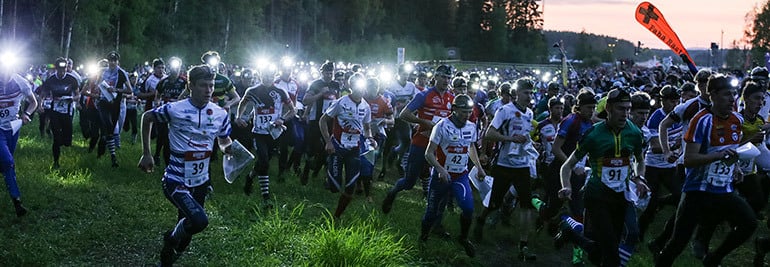
Mårten Boström's essential tips for Jukola terrain
Jukola Relay, the largest orienteering event in the world, is just around the corner. Mid-June close to 20 thousand athletes will face some unique, challenging terrain in Southern-Finland. We turned to former sprint world champion Mårten Boström for some advice. Read on to learn more.
The 70th edition of Jukola Relay and the 41st Venla Relay will take the orienteers to Lahti and Hollola in Päijät-Häme Region about an hour north of Helsinki, Finland. The competition area is quite peculiar, as it is dominated by depression terrain formed by the Ice-Age. These depressions make navigating hard; the hollows are not as easy to see in the terrain as hills and rises would be. One also has to read the map carefully; are the contour lines up or down?
“Most of the features we use for navigation are below the main running level, not above as we're used to,” says Mårten Boström.
The depressions vary in size, some are small, some go down as much as 40 meters. Most of the terrain is pine forest with good runnability. There are also a lot of existing trails.
To get an idea of how the maps will look, check this out
“You should not plan on running through all depressions. If there's yellow on the bottom it might be a good idea to run along a depression's bottom, but otherwise, I'd suggest using the ridges between the depressions. Most animal trails and runner's tracks will also be going along the ridges, where you'll be avoiding the excess climb.”
Smart use of compass use is crucial in this year's Jukola.
“Most features you'll use for navigation are contours with soft edges, so it's hard to get your 100% specified location. When going through depressions (be sure you will no matter how well route choices you make) you need to be careful to exit in the correct angle,” says Mårten.
Main image by Kimmo Hirvonen / Lahti-Hollola Jukola, other images by Petri Kovalainen / Suunto
READ MORE
THREE REASONS TO USE A THUMB COMPASS
HOW TO USE SUUNTO AIM-6 THUMB COMPASS
LEARN MORE ABOUT SUUNTO AIM-6
